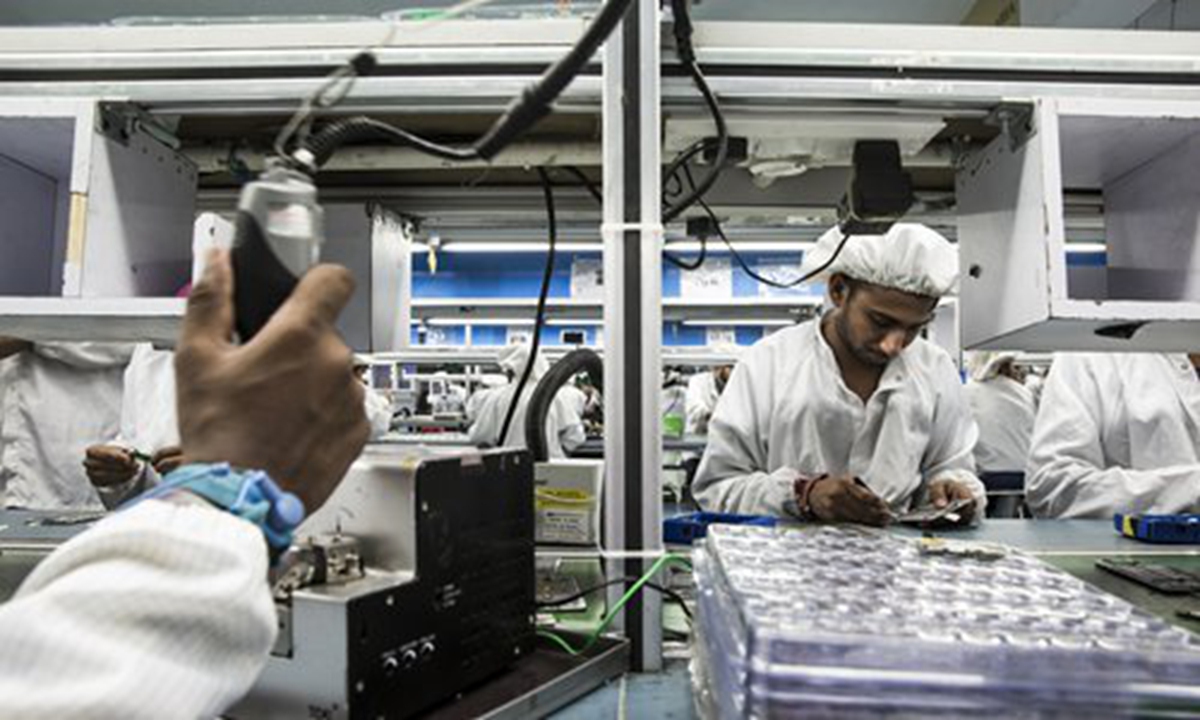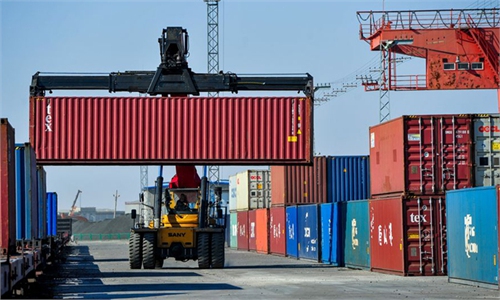
A view of a production line of a smartphone factory in India. Photo: VCG
With India's daily tally of new infections on Tuesday hitting the lowest level since mid-March, many have turned their attention to the prospects for India's economic recovery, which appears to be full of challenges and opportunities.The fact that foreign investment flew into the country's tech industry at an accelerated pace has been seen as grounds for optimism, which some have even touted as a sign of the booming Indian knowledge economy.
Indian tech start-ups raised a record $7.2 billion in the quarter ended June, according to a recent Financial Times report citing data from Tracxn. Also, the World Investment Report 2021 by the UN Conference on Trade and Development showed in June that India became the fifth largest recipient of foreign direct investment inflows by receiving $64 billion in 2020.
Yet, it would only be a wishful thinking if someone really believes foreign investment could help lift the Indian economy out of its current situation. With many still worrying about the potential impact of a third COVID-19 wave on the economy, it should be noted that a sustained economic recovery will not only hinges on whether the Modi government is better prepared for a third wave, but also whether it could push forward with the industrialization in the right direction.
For a long time, economists generally believe that for a populous country like India, only through industrialization can the government alleviate unemployment pressure and promote the overall development of society. The same approach may also work for its economic recovery.
However, India's industrialization has been progressing slowly, which is not something foreign investment can change. In fact, most of the foreign investment has gone into India's high-tech industry such as the information and communication technology sector. While the Indian government has rolled out some ambitious stimulus policies to lure investment in the domestic manufacturing sector during the pandemic, the impact is not as big as expected.
Such result is actually not surprising, given India's weak manufacturing foundation, which has been exposed in the pandemic hit. And the reason behind this is that the Indian government used to pin its industrialization hope on the development of the IT sector, which it believes was a shortcut to overtake China on the curve.
However, it turns out that there is no shortcut after all. India needs much more than favorable investment policies to develop its manufacturing. It needs to lay a better foundation for industrialization.
Without the support of a mature supply chain, smooth logistics and skilled workers, it is impossible for foreign investment to drive the overall manufacturing growth. And without the full development of the manufacturing industry, India will always only be a potential large market.



